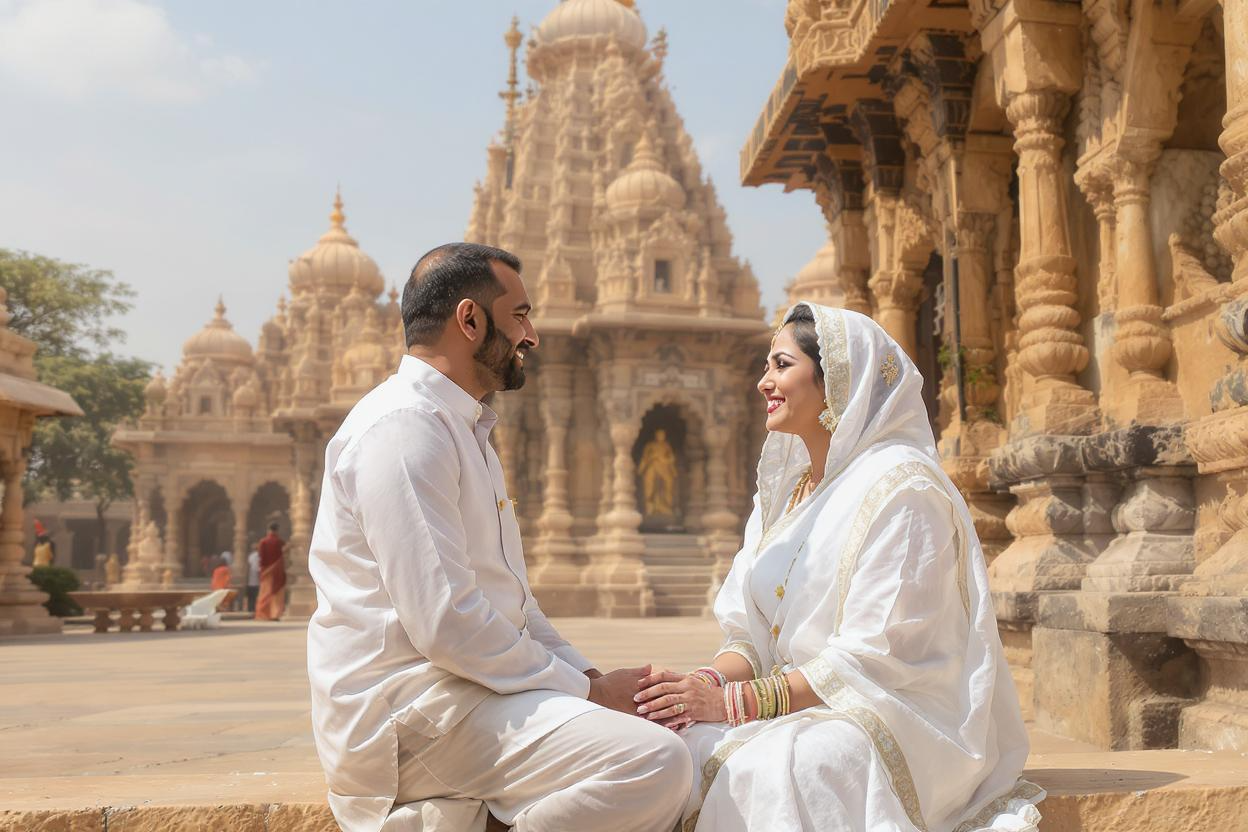In Jain tradition, marriage is considered a sacred union that brings together two individuals committed to following the path of non-violence (Ahimsa) and spiritual growth. Your Jain marriage biodata serves as more than an introduction—it reflects your values, lifestyle, and commitment to Jain principles. This guide will help you create a biodata that honors Jain traditions while appealing to families seeking a spiritually aligned match.
- Uttaradhyayana Sutra

1. Begin With Your Jain Identity
Your opening should reflect your connection to Jainism. Consider starting with a Jain prayer or sharing your Jain background:
Example Introduction:
"Namaskar. Born into a devout Digambar Jain family, I strive to live by the principles of Ahimsa, Aparigraha, and Anekantavada. My family traces its Jain heritage to the ancient pilgrimage site of Shravanabelagola. I seek a partner who shares this commitment to Jain values and spiritual growth."
2. Highlight Key Jain Attributes
Traditional Jain families will look for these essential elements in your biodata:
- Sect: Whether you follow Digambar, Shwetambar, Sthanakvasi, or Terapanth traditions
- Dietary Practices: Level of vegetarianism (Lacto-vegetarian, Vegan, Root-vegetable avoidance)
- Religious Observance: Paryushana participation, Samvatsari fasting
- Temple Involvement: Regular visits to Jain derasars or upashrayas
- Jain Education: Knowledge of Jain scriptures and philosophy
- Vows: Any Jain vows (vrats) you observe
Jain Tip: Be clear about your level of observance. Whether you're from a traditionally strict Jain family or practice a more modern interpretation of Jainism, transparency helps find compatible matches.
3. Showcase Jain Values in Personal Details
When describing education, career, and hobbies, highlight Jain principles:
Example Personal Section:
Education: Graduate from Jain University with degree in Commerce
Career: Accountant at a Jain charitable trust - aligning profession with non-violent principles
Hobbies: Jain meditation (Preksha Dhyan), volunteering at animal shelters (consistent with Ahimsa), reading Jain literature
Diet: Strict lacto-vegetarian, no root vegetables, follow Jain fasting days

4. Family Background with Jain Context
Jain marriages often consider family heritage. Include:
- Family's historical connection to Jainism (e.g., ancestral involvement with Jain tirths)
- Family's involvement in Jain institutions or organizations
- Notable Jain ancestors or relatives (sadhus/sadhvis in family)
- Family's participation in Jain events (Paryushan, Mahavir Jayanti)
- Gotra and original place from where family migrated
5. Expectations for a Jain Partner
Clearly express what you seek in a partner regarding Jain lifestyle:
- Level of religious observance expected
- Dietary preferences for the household
- Views on raising children as Jains
- Expectations regarding participation in Jain community
- Thoughts on business/professional ethics aligned with Jain values
Remember: Your Jain marriage biodata should reflect both your personal journey with Jainism and your vision for a marriage rooted in Jain principles. Include a prayer that your biodata helps you find the right life partner who will walk with you on the path of Dharma.
6. Design Elements That Honor Jain Tradition
When using our Jain Marriage Biodata Maker, consider these culturally appropriate design choices:
- Subtle Swastik or Om symbols in the header
- Jain quotes or sutras as decorative elements
- Traditional colors (purple, white, gold)
- Photos showing your Jain identity (at derasars, during Paryushan, etc.)
Creating a Jain marriage biodata is an opportunity to represent your faith authentically while seeking a partner who shares your spiritual values. By focusing on Jain principles and lifestyle, you'll attract families looking for a truly Dharma-inspired union.




